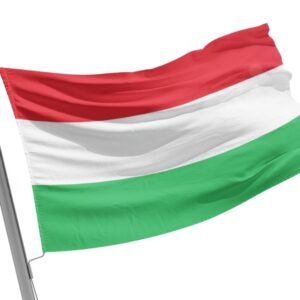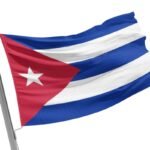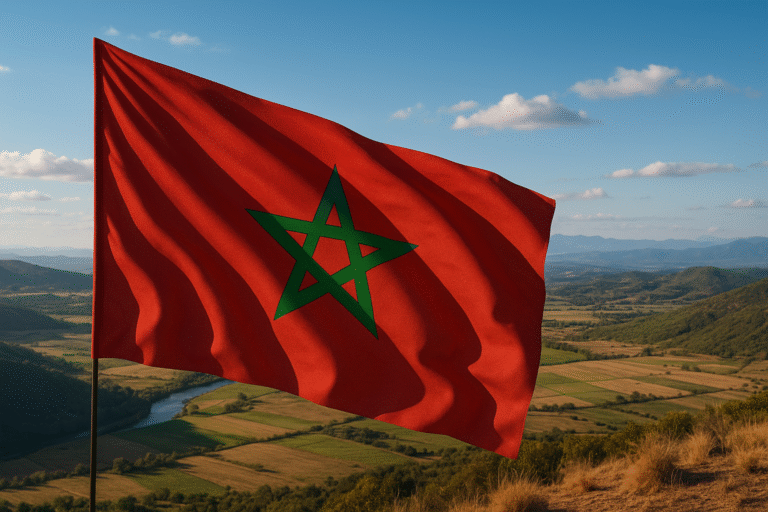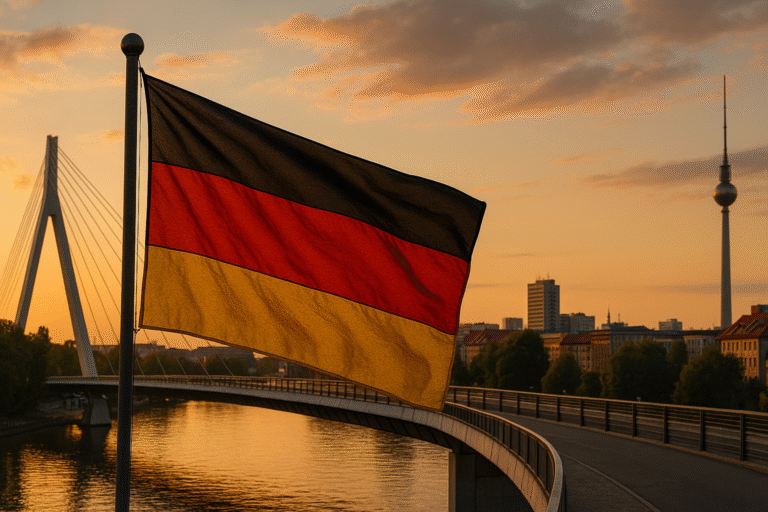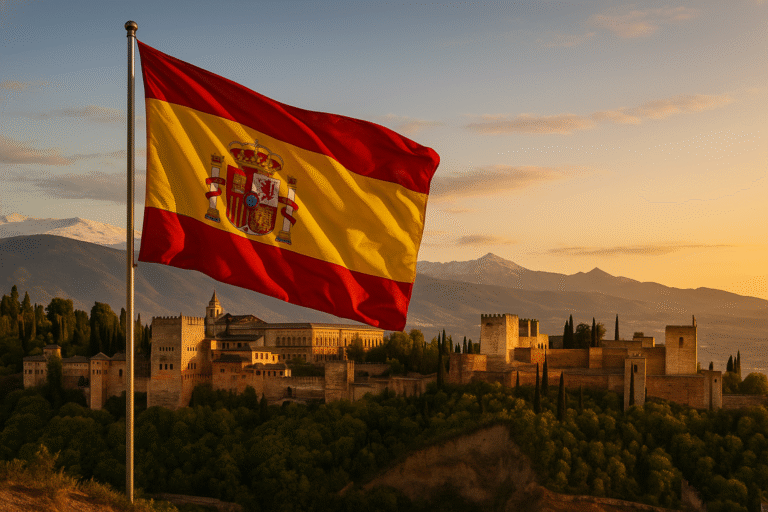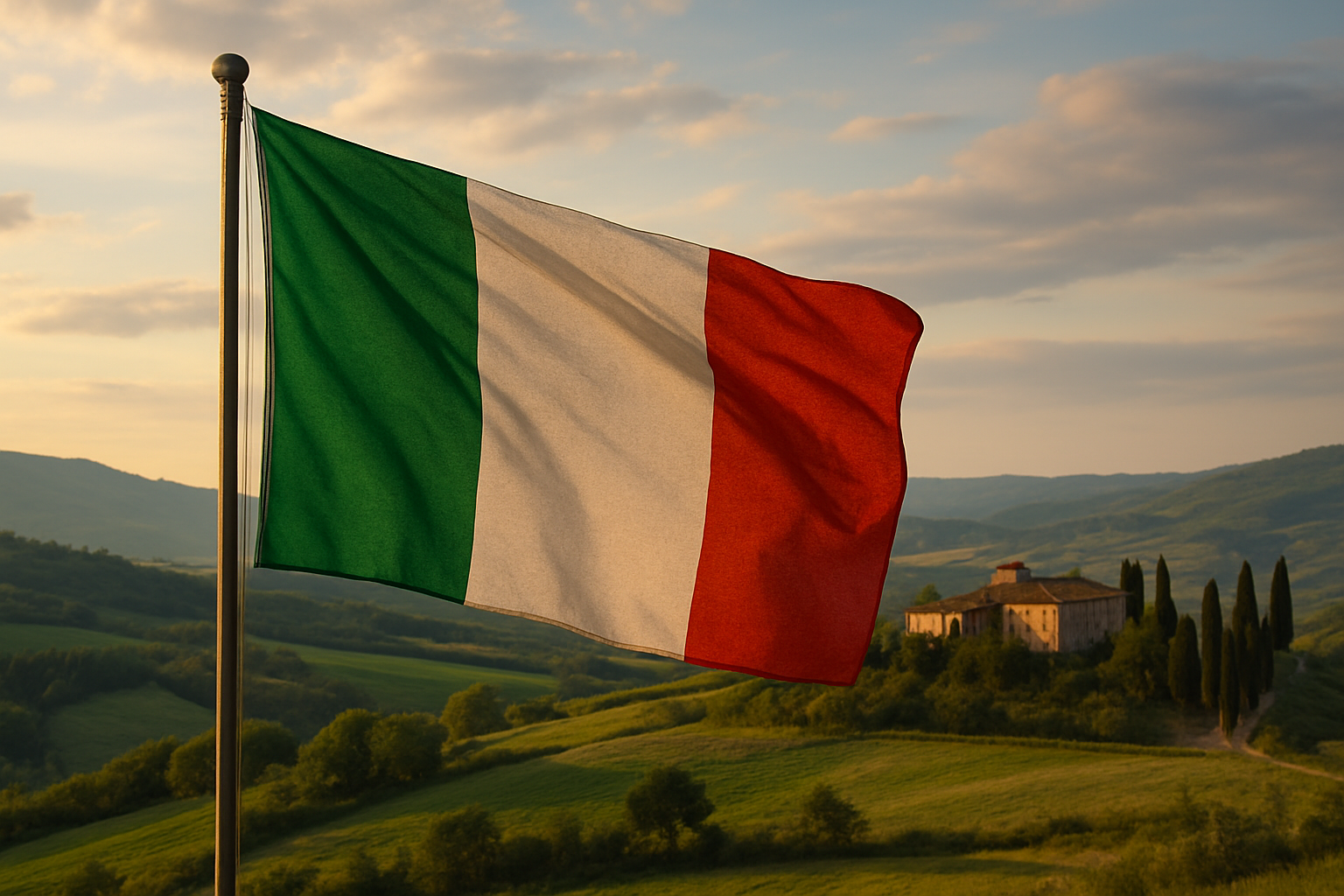
Flaga Włoch: Kolory, znaczenie, historia, pochodzenie
The Italian flag, with its vertical bands of green, white, and red, is more than a national symbol. It embodies centuries of struggle, unity, and cultural identity that have shaped modern Italy. Known affectionately as “Il Tricolore,” this iconic emblem first emerged during a period of revolutionary fervor and national awakening. Its three bold colors have witnessed the transformation of fragmented Italian states into a unified nation, standing resilient through monarchy, fascism, and republic. The story of the Italian tricolor is, in many ways, the story of Italy itself. Rich in history, deeply symbolic, and instantly recognizable worldwide.
Quick Summary
The Italian flag, known as “Il Tricolore,” features three vertical bands of equal width colored green, white, and red. First adopted on January 7, 1797, by the Cispadane Republic during the Napoleonic era, it became the official national flag through several transformations.
The flag originated from a tricolor cockade presented to the National Guard of the Transpadane Republic in 1796. Its design was influenced by the French tricolor but created a distinct Italian identity by replacing blue with green.
During the Risorgimento (Italian unification movement), the tricolor with the Savoy coat of arms on the white band became the flag of the Kingdom of Italy from 1861 to 1946. Following the referendum that established the Republic in 1946, the coat of arms was removed, resulting in the simple tricolor we recognize today.
The symbolism of the colors, while not officially defined, is commonly understood as: green representing the Italian landscape and hope; white symbolizing faith, peace, and the Alpine snow; and red honoring the blood shed for independence.
Origins of the Tricolore
Revolutionary Beginnings (1796-1797)
The birth of the Italian tricolor is inextricably linked to the turbulent period following the French Revolution. As Napoleon Bonaparte’s campaigns swept through the Italian peninsula in 1796, they brought with them not only military conquest but revolutionary ideals of liberty and national identity. These campaigns catalyzed nationalist sentiments among Italians who had long lived under separate kingdoms, duchies, and republics.
The very first version of what would become the Italian national flag appeared in Lombardy. On October 9, 1796, a tricolor cockade of green, white, and red was presented to the National Guard of the Transpadane Republic, a Napoleonic satellite state established in northern Italy. While this wasn’t yet a flag proper, it marked the first official use of these three colors together as a national symbol.
The Cispadane Republic and First Official Adoption
The pivotal moment in the tricolor’s history came on January 7, 1797, in the city of Reggio Emilia. There, the Cispadane Republic another short lived state formed during the Napoleonic era made a historic decision that would echo through centuries of Italian history. During a formal gathering, Deputy Giuseppe Compagnoni proposed that the “Cispadane Standard or Flag of Three Colours, Green, White and Red” be adopted as the official flag of the republic.
This proposal was approved unanimously, making the Cispadane Republic the first sovereign Italian state to officially adopt the tricolor. The original design featured a horizontal arrangement of the three colors (unlike the vertical bands seen today), with the republic’s coat of arms displayed prominently in the center. This momentous decision is now commemorated annually as “Tricolour Day” on January 7th.
Napoleonic Influence on Design
The influence of the French tricolor on Italy’s national flag is undeniable. Both in color arrangement and revolutionary spirit, the Italian flag drew inspiration from its French counterpart. However, there were crucial differences from the beginning. The Italian design replaced the French blue with green, creating a distinct national identity while still honoring the revolutionary ideals that inspired both nations.
The choice of horizontal bands in the original Cispadane flag mirrored the French arrangement, but this would later change. On February 25, 1797, the Cispadane Republic modified its flag design, adopting vertical bands that distinguished it further from the French tricolor. This vertical arrangement would eventually become the standard for the Italian national flag we recognize today.
Despite being born in a period of French influence, the Italian tricolor quickly developed its own character and meaning. It became a powerful symbol not of French control but of Italian aspirations for independence and unity. In the decades that followed, as various Italian states fought for liberation and unification, the green, white, and red banner would emerge as the natural emblem of the Italian national identity that was beginning to take shape.
Historical Evolution Through Key Periods
Pre-unification Era (before 1848)
Before Italy became a unified nation, the peninsula was a complex mosaic of separate states. Each of these entities maintained its own unique flag and symbols of authority. The Papal States used the yellow and white banner with the papal keys. The Kingdom of Two Sicilies displayed the white flag with the Bourbon coat of arms. The Grand Duchy of Tuscany featured a red lily on white background. Despite this fragmentation, the green, white, and red tricolor gradually gained popularity as a symbol of Italian unity and aspirations.
Following the short lived Napoleonic states, the tricolor went underground. After the Congress of Vienna in 1815 restored many of the old monarchies, displaying the tricolor became an act of political rebellion. Revolutionary societies like the Carbonari adopted the tricolor colors in their secret insignia, keeping the symbol alive during the repressive years between 1815 and 1848. These colors became increasingly associated with the growing sentiment for Italian unification known as the Risorgimento.
Throughout this period, the tricolor appeared spontaneously during revolts and uprisings across the Italian peninsula. Though often suppressed by Austrian forces and conservative rulers, the flag’s popularity grew steadily among those who dreamed of a united Italy. Patriots and revolutionaries risked imprisonment or worse to display these forbidden colors, transforming the tricolor from a mere flag into a powerful symbol of national aspiration.
Risorgimento Period (1848-1870)
The revolutionary wave that swept across Europe in 1848 marked a turning point for the Italian tricolor. When King Charles Albert of Sardinia granted a constitution and declared war on Austria in March 1848, he officially adopted the tricolor with the addition of the Savoy coat of arms at its center. This was the first time a major Italian state officially embraced the tricolor as its national flag, giving it new legitimacy and prominence.
The First Italian War of Independence saw revolutionary governments established across the peninsula, most notably the Roman Republic and the Republic of San Marco in Venice. Each adopted variations of the tricolor, solidifying its role as the universal symbol of Italian unity and independence. Though these revolutionary governments were eventually suppressed, the tricolor had firmly established itself as the emblem of Italian nationalism.
Throughout the 1850s, the Kingdom of Sardinia under the leadership of Count Camillo di Cavour continued to use the tricolor with the Savoy emblem. As Sardinia became the champion of Italian unification, its flag became the standard around which unification efforts rallied. Giuseppe Garibaldi and his famous “Thousand” volunteers carried this flag in their campaign to liberate southern Italy in 1860, spreading the tricolor from north to south.
Kingdom of Italy (1861-1946)
When the Kingdom of Italy was proclaimed on March 17, 1861, with Victor Emmanuel II as its first king, the tricolor with the Savoy coat of arms became the official flag of the unified nation. The design featured vertical bands of green, white, and red with the royal arms of the House of Savoy prominently displayed on the white central band. This version of the flag would remain in use for the next 85 years, through some of the most turbulent periods in Italian history.
The flag’s design remained consistent through the liberal period of Italian history, two World Wars, and the Fascist era under Benito Mussolini. Even during the Fascist period (1922-1943), the basic design of the flag remained unchanged, though the regime added fascist symbols to state flags and military standards. The continuity of the tricolor through these different political systems underscores its importance as a symbol that transcended particular regimes.
During World War II, after Mussolini’s fall in 1943, Italy was divided. The Nazi supported Italian Social Republic in the north used a tricolor with an eagle, while the Kingdom in the south, now allied with the Allies, continued to use the traditional flag with the Savoy arms. This division of the flag mirrored the tragic division of the country itself during the final years of the war.
Italian Republic (1946-present)
The modern chapter in the tricolor’s history began with the birth of the Italian Republic. Following World War II, Italians voted in a referendum on June 2, 1946, to abolish the monarchy. With the House of Savoy no longer ruling Italy, the coat of arms was removed from the flag, returning it to the simple vertical bands of green, white, and red that we recognize today. This pure tricolor became the official flag of the new Italian Republic.
The republican constitution, which came into effect on January 1, 1948, formally recognized the tricolor as the national flag in Article 12, which states: “The flag of the Republic is the Italian tricolor: green, white, and red, in three vertical bands of equal dimensions.” This constitutional recognition cemented the tricolor’s status as the preeminent national symbol.
In the post war period, the tricolor has served as a unifying symbol for Italians. It flies proudly over government buildings, schools, and public spaces. It appears at sporting events, cultural celebrations, and official ceremonies. The removal of the royal emblem transformed the flag from a symbol of the kingdom to a representation of the Italian people themselves, transcending political divisions and embracing all citizens.
Design and Symbolism
Vertical Arrangement of the Three Colors
The Italian flag consists of three vertical bands of equal dimensions, displaying green on the hoist side, white in the center, and red on the fly side. This vertical arrangement distinguishes it from many other tricolor flags, most notably the French flag which features horizontal bands. The vertical orientation was adopted in 1797 when the Cispadane Republic modified its original horizontal design, creating a distinct visual identity that has remained consistent through centuries of Italian history.
The proportions of the flag are standardized at a ratio of 2:3, meaning that for every two units of height, the flag extends three units in length. This precise specification ensures uniformity in all official displays of the Italian tricolor, from government buildings to international events. The equal width of each color band reinforces the symbolic equality of the values they represent, with no single element dominating the others.
Color Meanings and Interpretations
The meanings attributed to the three colors of the Italian flag have evolved over time, with various interpretations gaining prominence in different historical periods. No official symbolism was assigned to the colors when the flag was first adopted, leaving room for popular interpretations that have become part of Italian cultural understanding.
Green: The most commonly accepted interpretation is that green represents the lush Italian landscape, the Mediterranean maquis vegetation, and the country’s rich agricultural traditions. Some historical accounts suggest it symbolizes hope for the future and the evergreen nature of Italian ideals. Others point to its connection with the uniform color of the Milanese civic guard during the revolutionary period.
White: This central color is widely understood to represent faith and purity. In some religious interpretations, it connects to the strong Catholic traditions of Italy. From a more secular perspective, it symbolizes the snow of the Alps that forms Italy’s natural northern boundary and the purity of the Italian cause during unification.
Red: Perhaps the most emotionally charged color in the tricolor, red is commonly said to represent the blood shed by Italians in the struggle for independence and unification. It embodies the passion, sacrifice, and courage of the Italian people throughout their history. Some interpretations also connect it to charity in the Christian tradition, forming part of a theological reading of the flag alongside faith (white) and hope (green).
Another popular interpretation links the three colors to specific Italian cultural and historical elements: green for the plains and hills, white for the snow capped Alps, and red for the blood spilled in the wars of Italian independence. Some historians also point to possible connections with the colors of Milan (white and red) combined with the green of the uniform of the Milanese civic guard.
Historical Influences on Color Selection
The selection of these specific colors was not arbitrary. Historical evidence suggests that the green, white, and red combination drew inspiration from multiple sources. The red and white were already present in many regional flags and coats of arms across northern Italy, particularly in Lombardy and Emilia Romagna. The addition of green created a unique combination that was distinctly Italian while still acknowledging the revolutionary spirit of the era.
Some scholars point to the influence of Freemasonry and its emphasis on universal values in the selection of these colors. Others note that these colors were associated with the republican ideals emanating from France during the revolutionary period. Yet what makes the Italian tricolor unique is how it adapted these influences into a distinctly Italian symbol that transcended its revolutionary origins.
Exact Proportions and Official Specifications
The modern Italian flag is governed by precise specifications that ensure consistency in its production and display. The official dimensions specify a 2:3 ratio, though this can be adjusted to 3:5 for certain international uses to match the proportions of other national flags. The three vertical bands must be of exactly equal width.
The exact color specifications have been standardized in recent times. The green is specifically defined as “verde bandiera” (flag green), a particular shade distinct from other greens used in flags. Similarly, the red is “rosso bandiera” (flag red), a vibrant shade carefully selected to maintain its visibility and distinction from other national flags. The white is pure, without any tint or shade.
For official government use, the colors are defined by precise color models:
- Green: Pantone 17-6153 TCX “Classic Green”
- White: Pure white
- Red: Pantone 18-1662 TCX “Flame Scarlet”
These exacting standards ensure that whether displayed in Rome, Milan, or anywhere across the globe, the Italian tricolor maintains its distinctive appearance and dignified presence, instantly recognizable as the symbol of Italian national identity.


